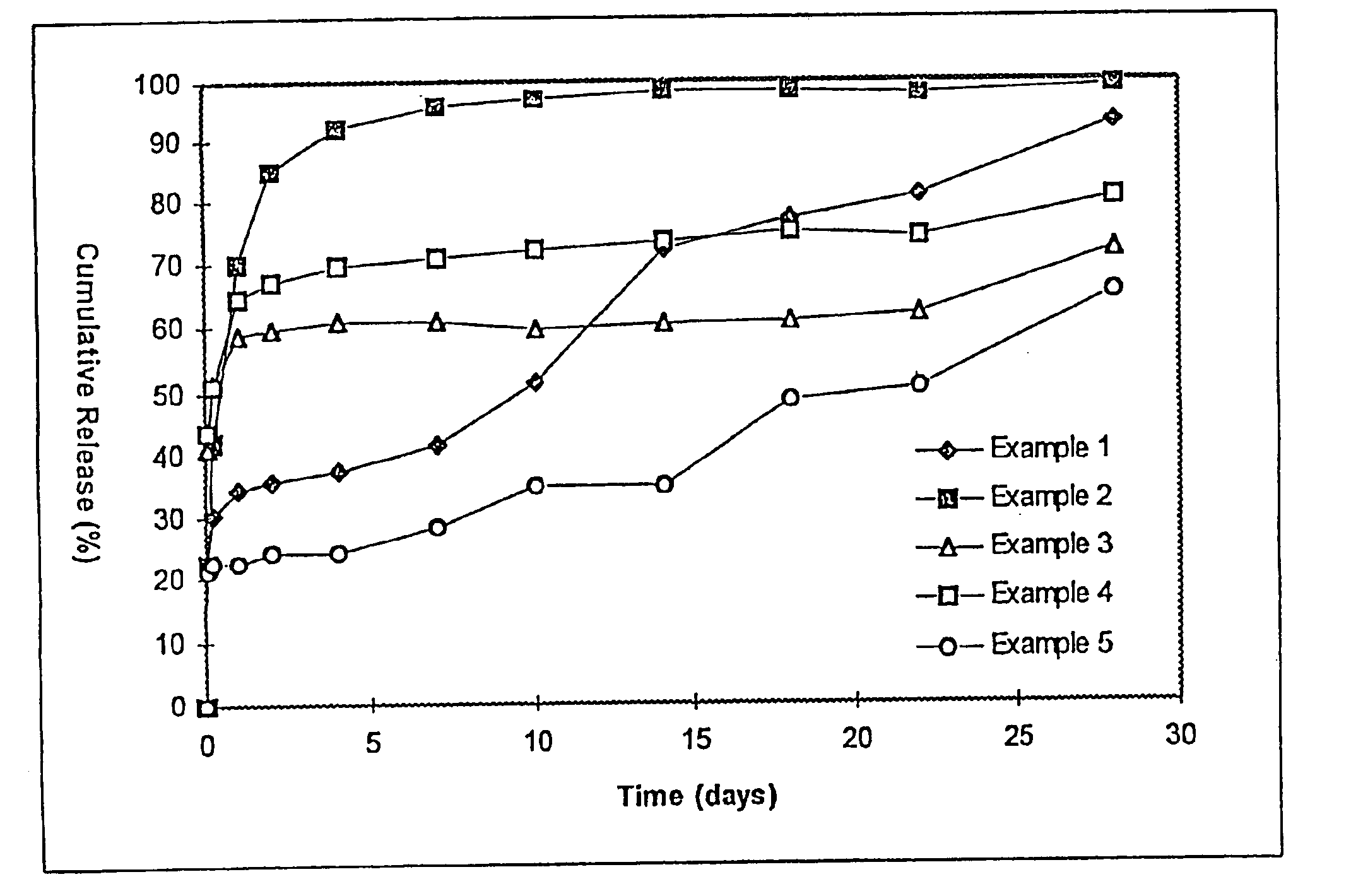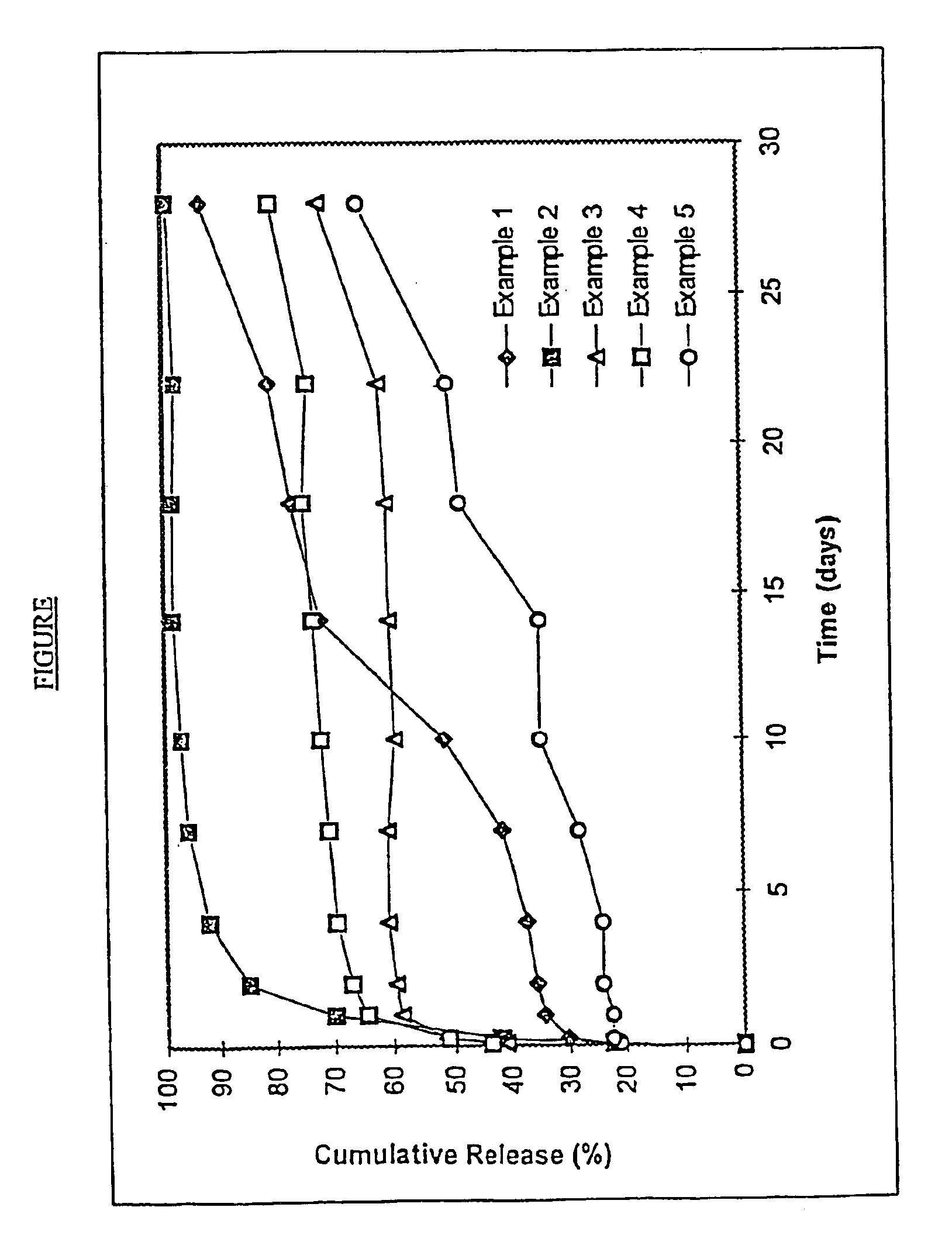Encapsulation method
a technology of active substances and encapsulation, which is applied in the field of encapsulation of active substances, can solve the problems of large amount of organic solvent needed for extraction and washing, impact of environmental pollution, and polymeric droplets containing drugs, and achieves the effects of improving the absorption of active ingredients into particles, high loading, and small particle siz
- Summary
- Abstract
- Description
- Claims
- Application Information
AI Technical Summary
Benefits of technology
Problems solved by technology
Method used
Image
Examples
example 1
The following procedure was used to encapsulate bovine serum albumin (BSA) in PLGA (poly(DL-lactide-coglycolide)). First a polymer solution was prepared by dissolving 0.47 g of PLGA (RG504H, Boehringer Ingelheim) in 3 ml of ethyl acetate in a test tube. Then, 44 mg of BSA, (bovine serum albumin; Sigma A-0281) was dissolved in 300 μl of 10 mM Na-phosphate buffer pH 6.4. The BSA solution was added to the polymer solution and the BSA was homogenously dispersed in the polymer solution by vortex mixing (VF2, IKA-WERK) for one minute. The dispersion was placed in a 5 ml syringe with an 18 G needle.
A 500 ml beaker containing 300 ml of. 40%(w / w) polyetylene glycol 20000 was fitted with a 4-bladed propeller stirrer. The BSA / polymer dispersion was transferred to the beaker by slowly injecting the BSA / polymer dispersion into the PEG solution. The stirrer speed was then reduced and the mixture was left standing overnight.
The stirrer speed was set at 8 again and then 400 ml of deionized water we...
example 2
The same procedure was performed as in example 1 except that 2% (w / w) polyvinyl alcohol (PVA, mw=22000, Fluka)in water was used instead of the polyethylene glycol solution.
The resulting microspheres had a particle diameter of 1-2 mm and contained 7.0% of BSA. An in vitro release test was conducted as in example 1 and the results are shown in FIG. 1. Sustained release for about 2 days was achieved with this formulation. The large size would not have permitted injection using acceptable needles.
example 3
The same procedure was performed as in example 1 except that the an Ystral homogenizer was used instead of said stirrer when adding the BSA / polymer dispersion. After addition of the BSA / polymer dispersion the homogenizer was replaced by the 4-bladed propeller stirrer.
The resulting microspheres had a particle diameter of 1-5 μm and contained 5.5% of BSA. An in vitro release test was conducted as in example 1 and the results are shown in FIG. 1.
PUM
| Property | Measurement | Unit |
|---|---|---|
| particle size | aaaaa | aaaaa |
| particle size | aaaaa | aaaaa |
| particle size | aaaaa | aaaaa |
Abstract
Description
Claims
Application Information
 Login to View More
Login to View More - R&D
- Intellectual Property
- Life Sciences
- Materials
- Tech Scout
- Unparalleled Data Quality
- Higher Quality Content
- 60% Fewer Hallucinations
Browse by: Latest US Patents, China's latest patents, Technical Efficacy Thesaurus, Application Domain, Technology Topic, Popular Technical Reports.
© 2025 PatSnap. All rights reserved.Legal|Privacy policy|Modern Slavery Act Transparency Statement|Sitemap|About US| Contact US: help@patsnap.com


